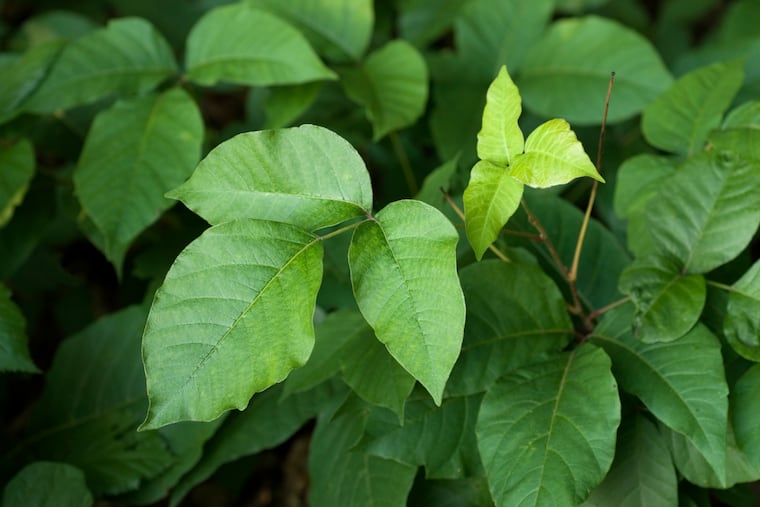How to identify and treat poison ivy | Expert Opinion
What to do if you come into contact with poison ivy? Wash exposed areas with copious water, ideally within 20 minutes of exposure.

“Leaves of three! Let them be.”
“Hairy vine, no friend of mine!”
These common adages help us remain watchful for an unwelcomed backyard presence: poison ivy.
The plant is flourishing with climate change and land development. And as we venture out to relish the late summer weather, it is important to be able to identify, prevent and treat poison ivy.
Poison ivy belongs to the Toxicodendron family of plants, which includes poison ivy, poison oak and poison sumac. When injured, these plants release urushiol, an oily resin that causes the notorious rash.
Poison ivy, common in Eastern states, grows as a shrub or vine that can reach impressive heights. Its leaves are made of three leaflets and the vines have small identifiable “hairs,” which help it climb trees. The leaves can be shiny and can have rounded notches or “thumbs.”
Remember that it is direct contact between the skin and the resin that causes the rash. The resin can also be spread from the fur of pets onto human skin.
Wherever the contact occurred is where the rash can develop. This causes the rash to appear in shapes that resemble lines or splashes on the skin, a key diagnostic clue. The rash forms small fluid-filled blisters that ooze. The itch is often severe, will worsen with scratching, and can interfere with sleep. Rare cases caused by aerosolization of the resin from burning brush or forest fires can lead to severe airway reactivity and require emergency care.
The resin can remain active in dead plants for years, which is why the rash can also occur in the winter.
We are not born allergic to poison ivy. It requires repeat exposure leading to sensitivity over time. Once you develop the reaction, you remain allergic, and the majority of humans are allergic.
You cannot get poison ivy by touching someone else’s blisters or blister fluid. This brings us to another common misconception: You cannot spread the rash by scratching it. The poison ivy rash is a delayed hypersensitivity reaction. It takes several hours to days after contact before the rash appears. The full reaction might develop over two weeks or so, giving the impression that the blisters may be “spreading” from scratching during that time.
What to do if you come into contact with poison ivy? Wash exposed areas with copious amounts of water, ideally within 20 minutes of exposure. Avoid scrubbing with soap as this can break up and spread the resin on your skin. It is a good idea to wash exposed skin and pets after activities such as hiking and gardening in case there was contact.
Treatment depends on severity. If the rash is limited or symptoms are mild, over-the-counter hydrocortisone 1% cream and lotions with pramoxine or calamine can reduce itch. Epsom salt soaking can dry up the blisters. Avoid Benadryl cream or Neosporin, as these can create additional reactions on the skin.
Cool compresses, icing, and using topical treatments that were stored in the refrigerator offer immediate relief. If you have severe symptoms such as widespread involvement, fever or intense swelling, call your physician immediately. Severe cases can be treated with prescription topical steroid creams or oral or injectable steroids.
Elizabeth Jones is an assistant professor in the department of dermatology and cutaneous biology at Jefferson University.